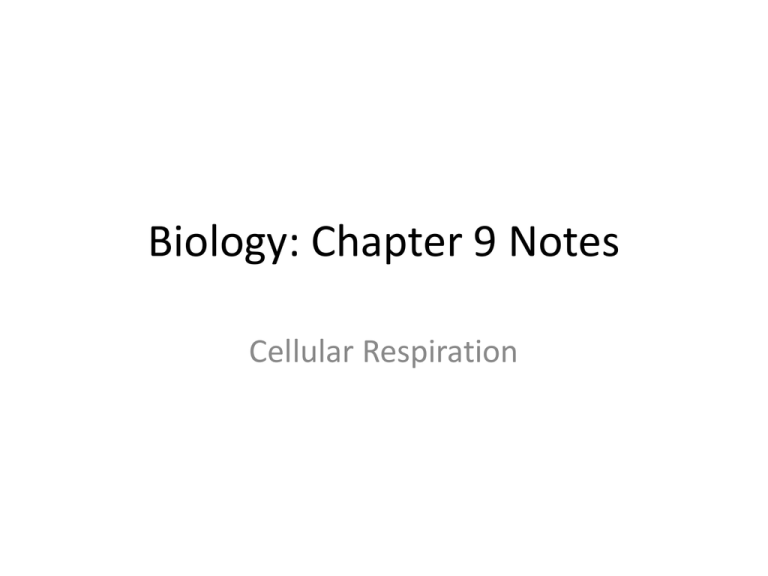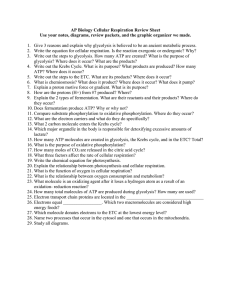Biology: Chapter 9 Notes
advertisement

Biology: Chapter 9 Notes Cellular Respiration 1. Organisms get the energy they need from Food or the Sun! 2. Energy stored in food is expressed in Units of calories 3. Define calorie. Energy needed to raise the temperature of 1 gram of water 1 degree celcius. 4. What is a Calorie (with a capital C?) How does it compare with a calorie? Kilocalorie = 1000 calories 5. How many calories are in the following? Glucose: 3,811 Carbohydrates: 4,000 Fats: 9,000 6. Define cellular respiration using symbols and words. O2 + C6H12O6 CO2 + H2O + ATP Oxygen plus glucose yeilds carbon dioxide plus water plus energy (ATP) 7. What is the difference between aerobic and anaerobic? With oxygen Without oxygen 8. In cellular respiration, which processes (2) are aerobic? Kreb’s Cycle and Electron Transport Chain 9. In cellular respiration, which process (1) is anaerobic? Glycolysis 10. Why are photosynthesis and cellular respiration often considered opposites? Products and reactants are on opposite sides of the equations. Waste product = Reactants 11. How many ATP does cellular respiration generate? 36 ATP 12. In your opinion, is cellular respiration efficient? Why or why not? Yes, one glucose = 36 ATP More efficient than food for us or fuel for a car! 13. Energy not used to produce ATP is released as Heat 14-19. What are the three main stages of cellular respiration? Describe each. Glycolysis – “sugar breaking” – glucose is broken down Krebs Cycle – chemicals from glycolysis are further broken down Electron Transport and ATP Synthesis– high-energy electrons from Glycolysis and Krebs Cycle convert ADP into ATP Add to bottom of notes: Fermentation: When oxygen is not present, this occurs instead of the Krebs cycle. Example: yeast to alcohol, humans making lactic acid during exercise






